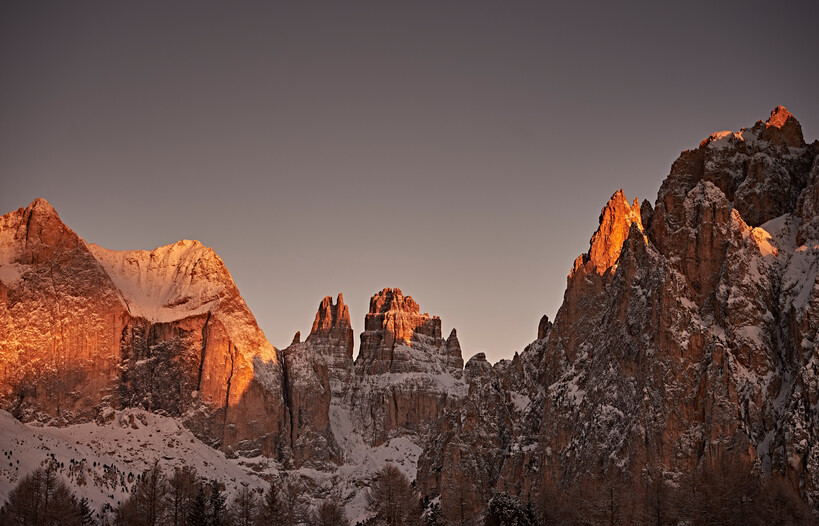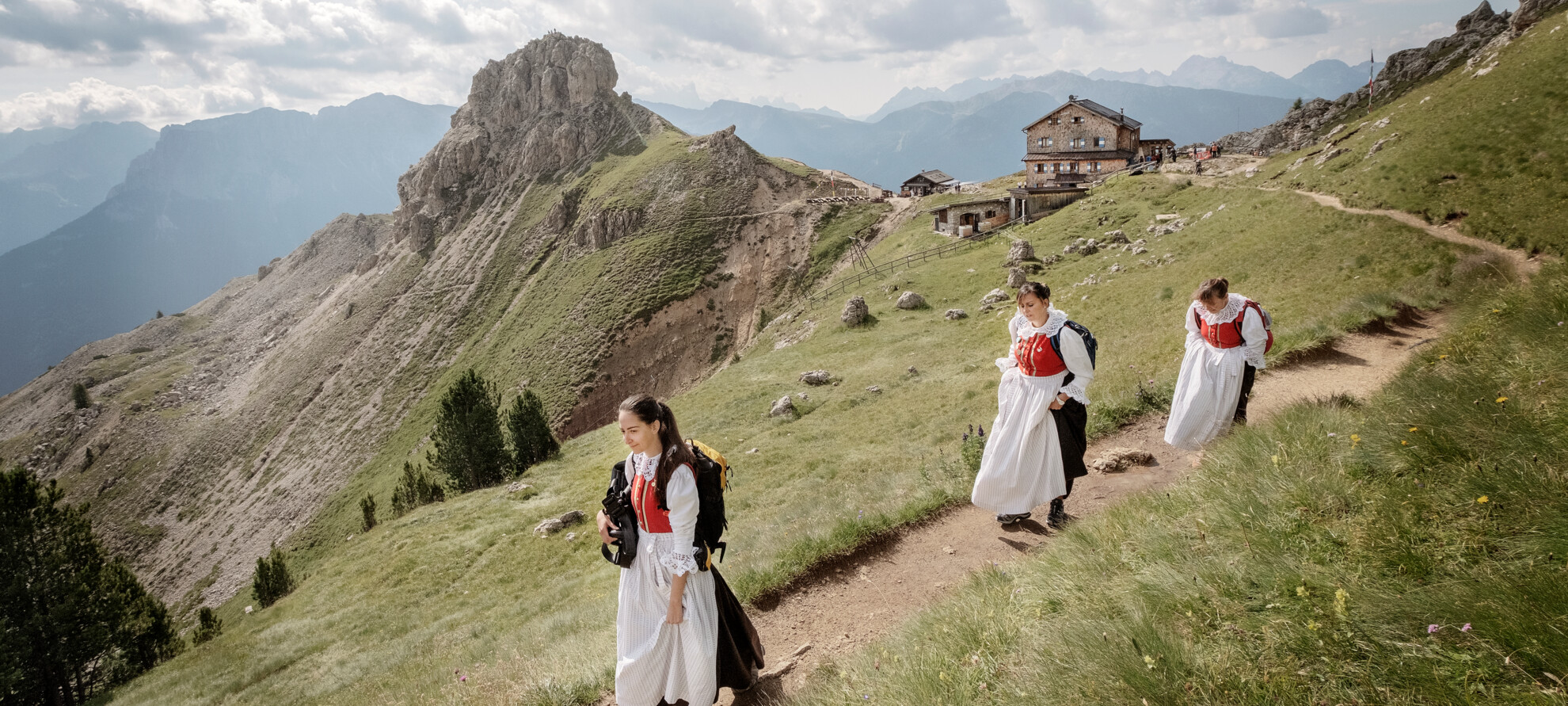Latemar and Catinaccio
King Laurin’s rose gardens, in the heart of the Dolomites
The adjacent and separate Latemar and Rosengarten mountain groups mark the western borders of the Fiemme and Fassa valleys. The Latemar and Catinaccio mountain ranges, of extraordinary natural and landscape significance, offer some of the most well-known Dolomite landmarks, such as the Torre di Pisa and the Torri del Vajolet, climbed by Georg Winkler and Tita Piaz.
The Latemar Group can be easily reached on foot thanks to the many trails that start from Pampeago, just above Tesero in Val di Fiemme or with ski lifts, from Predazzo up to Rifugio Passo Feudo (2.175m). This is the departure point for a hike that leads to (mountain hut) Torre di Pisa, which is considered the gateway to the Latemar mountain range.
The Pale di San Martino, Lagorai massif, Adamello and the Brenta mountain groups are the many peaks that open up before you. We would advise you make a stop at the Latemarium hiking park, which offers a privileged scenic view of these enthralling peaks and many theme trails that are also suitable for children.
While the Catinaccio can be reached directly from the centre of Vigo di Fassa (San Giovanni di Fassa) thanks to a modern cable car that takes you up to Belvedere del Ciampedìe (2.000 m a.s.l.) in just a few minutes. The mountain hut with the same name, which is considered one of the starting points of all the hikes in the Catinaccio - Rosengarten area, is a natural terrace. In fact, from here you have a superb view of the Dolomiti di Fassa: from the Gruppo del Sella, with its Sass Pordoi (2.950 m a.s.l.), to Sassolungo (3.181 m a.s.l.), the Gruppo del Latemar up to the Marmolada, the Queen of the Dolomites.

Discover the Dolomites and their ancient legends
The legend of King Laurin and enrosadira (alpenglow)
The legend of King Laurin was invented among these mountains to explain the phenomenon of enrosadira (alpenglow), the reddish glow of the Dolomites at sunset.
According to this legend, one day, the king of dwarves kidnapped the beautiful princess Similde and took her to his kingdom, on the Catinaccio mountain massif. To convince her to stay up there with him, he cast a spell and covered the mountain with beautiful roses. By the way, even today, in German this mountain massif is still called “Rosengarten” (rose garden).
However, very soon, Similde’s father, together with his army, marched to the foot of the Catinaccio to free the young girl. Laurin, well aware that he would soon lose his love, with a curse transformed all the lovely rose-covered meadows of the Catinaccio into a mass of pale rocks and jagged spires whose colour resembled that of the moon. Nobody would ever be able to see those roses, neither during the day nor at night.
The king of dwarves though had forgotten about sunset.
That is why it is exactly at this time of day that we still see the marvellous enrosadira (alpenglow), when the sun rays tinge the rocks with reddish hues, allowing us to see Laurin’s vanished rose-cloaked kingdom.

Want to know more?
Discover

